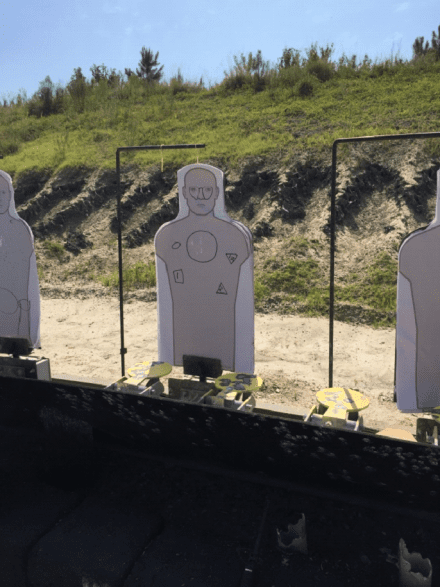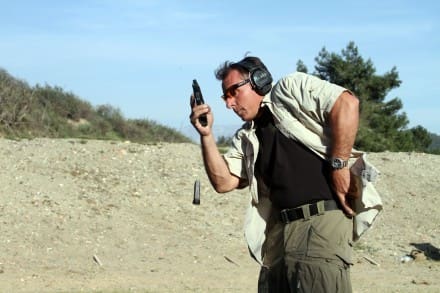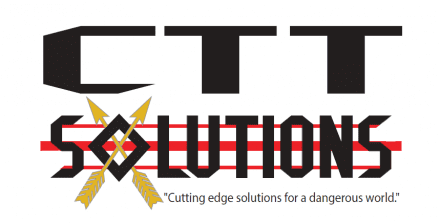I see a lot of different targets out there, some are very simple and some are quite ornate and expensive. A target is designed and intended to give the shooter speed and accuracy feedback based on historically significant data from other shooters across the spectrum of various shooting disciplines. For that reason I use almost entirely USPSA metric, IPSC classic, IPDA standard, B8 pistol and SR-1 rifle targets. I choose these because I want to know how accurately and how rapidly I shoot in relation to other accomplished shooters worldwide and those targets give me a legitimate comparative scale. If I don’t have them I can draw them with a Sharpie on a piece of cardboard from the trash and voila! I get the same feedback damn nearly.
I’ve spent deployments in far less developed countries where the targets that were supposed to be there were not. We ended up taking all the 9mm and 5.56 out of the boxes and dumping them back in the ammo cans so we could use the cardboard boxes as targets and used stencils and spray paint for both pistol and rifle targets with whatever target skins they did have. When we ran out of those we cut up and drew consistent sized target areas on any trash that would show bullet holes and we could glue, tape or staple to a backer. In the end it really doesn’t matter what you shoot at as long as you scale it comparable to what is considered a standard for your particular task. I have found LE qualification targets tend to be far too forgiving in the size of their scoring areas so I take my trusty Sharpie and draw a 6”x11” A-Zone, 8” IPDA -0, 5.54” B8 9-ring or 6.35” SR-1 9-ring. I will also use my pen to make non-standard shapes for offset or surgical shot drills and to put numbers in the shapes as well to add another mental component to the drills and training (the picture below is from a recent Marine class where we were exercising sight offset for M4 carbines. The shapes are all smaller than the height over bore). In the end, targets are anything that allows you to print shots and by using standard sizes and distances it gives you legitimate data to base your training goals or evaluations on.
Last point, it really doesn’t matter if a target has all kinds of scary faces or humanoid looking drawings or looks like a human anatomy char, it just matters that you can put the bullets exactly where you choose or where it is required as fast as possible. Everything else is flair and flair at a cost. Buy a Sharpie, pasting tape and some simple targets, maybe make a stencil or two and then get to the business of refining your shooting technique and spend the money saved on bullets. My last Unit in the Army used USPSA cardboard, NRA B8 and SR-1 targets for more than 90% of our marksmanship training that was not shot on steel for the reasons mention at the beginning of the piece.
– Mike Pannone
Mike Pannone retired from the Army’s premier assault force (1st SFOD-D) after an explosive breaching injury. A year after his retirement America was attacked on 9/11 and he returned to help serve his country as the head marksmanship instructor at the Federal Air Marshals training course and then moved to help stand up the FAMS Seattle field office. In 2003 he left the FAMS to serve as a PSD detail member and then a detail leader for the State Department during 2003 and 2004 in Baghdad and Tikrit.
In 2005 he served as a ground combat advisor of the Joint Counter IED Task Force and participated on combat operations with various units in Al Anbar province. Upon returning he gave IED awareness briefings to departing units and helped stand up a pre-Iraq surge rifle course with the Asymmetric Warfare Group as a lead instructor. With that experience as well as a career of special operations service in Marine Reconnaissance, Army Special Forces and JSOC to draw from he moved to the private sector teaching planning, leadership, marksmanship and tactics as well as authoring and co-authoring several books such as The M4 Handbook, AK Handbook and Tactical Pistol shooting. Mike also consults for several major rifle and accessory manufacturers to help them field the best possible equipment to the warfighter, law enforcement officer and upstanding civilian end user. He is considered a subject matter expert on the AR based Stoner platform in all its derivatives.
Gunfighter Moment is a weekly feature brought to you by Alias Training & Security Services. Each week Alias brings us a different Trainer and in turn they offer some words of wisdom.
Tags: Alias Training and Security Solutions, CTT Solutions, Mike Pannone





Mike, I respect your experience and training expertise so consider this discussion and not argument. I completely concur with what you said above for application to trained personnel. BUT I would offer the following observation, as a student of history, that the first humanoid style targets came about during WWII when it was observed that many soldiers weren’t engaging the enemy. Col. Grossman covers some of this in On Killing. I have more than a little experience training indig and new LE students and I think there may be some merit to “scary faces” targets with these folks. I am actually referring to some of the modern 3D targets. With many of these students I am not only teaching marksmanship but also driving home the point that they will be shooting PEOPLE and not paper. For that purpose, I think advanced targets are applicable. That being said, I too have used improvised targets out of necessity and don’t dispute a single point in your post. However, I would hate for some administrator to read the above and cut the target budget. I would love to see a follow on piece with your thoughts on teaching new shooters about accepting the concept of engaging hostile personnel. Again, not argument but rather discussion.
jb,
I wholeheartedly concur with Mike Pannone’s point that high quality and high value training does not require high dollar training aids. Kudos to Mike for saying it so well.
I think you and I are in agreement on that. However, I would advise you (as Bill does below) that Dave Grossman’s writings on the subject are flawed to say the least.
I’ll admit my personal bias up front. I served with LT Grossman in an infantry company many years ago. I can say that he was one of the worst junior officers I ever met. If I used one phrase to describe him it would be “self serving”.
Of course that doesn’t mean that he couldn’t have stumbled on some great truth about war and killing that everyone else missed. But that is not the case. And the following is my professional opinion on his thesis and not the man.
Despite the fact that Grossman’s writings have a following, his conclusions are based on demonstrably faulty suppositions and psycho babble rather than empirical science.
His book probably wouldn’t even be known today if not for the Columbine shooting in 1999. Suddenly he was on all the talk shows explaining why “good” suburban kids become killers.
His answer in a nutshell was violence on TV, movies and especially video games were to blame. The same nonsense that had been peddled at least since violent content was censored in comic books back in the 50s.
It was a simplistic answer that some Americans wanted to hear. But even then there was ample scientific and historic evidence to disprove his core theory. That humans have an innate reluctance to kill and can only become homicidal through some outside influence.
Grossman then ties in military training (and by extension police training) and claims that modern training methods like shooting E Type targets brings out the killer in PFC or Officer Tentpin.
Unfortunately this plays into the long ingrained but likewise irrational fears that some people have that military or combat style training must certainly damage impressionable young minds and therefore generates future potential mass shooters.
The training I am familiar with does exactly the opposite and demands and is designed to instill discipline and control in the use of deadly force. I have personally witnessed US Military personnel demonstrate that control countless times despite the risk to their own safety.
Training is a positive influence and it works. So I don’t believe – and the empirical evidence is pretty clear – that video games, violent movies, TV or military training ever “cause” little Johnny to commit an actual violent act.
And if you agree that is true then Grossman’s entire thesis is obviously nonsensical and should be disregarded.
TLB
I’m not certain that Grossman’s points have much empirical validity. Having gotten that out of the way and donned Nomex:
Copier paper, or if you’re well-funded, colored paper, or card stock, and index cards in various sizes and colors, and Post-It Notes in various sizes and colors combined with multiple colors of Sharpies, will make a great training range.
When I am going really uptown ULINE sells a huge number of sizes and colors of blank adhesive abel in multiple shapes and colors. Rolls of 500 will be ruined by weather and theft before they are ever used up.
Grossman’s work isn’t very good. I’d much more readily recommend “An Intimate History of Killing” by Joanna Bourke. Not as easy to read as On Killing but maybe that’s because it’s a legitimate work recommended to me by a man who was equal parts warrior aND scholar.
Targets with faces are only a small piece and one that can be done without. Men learn the ability to kill in their hand to hand training and from their leadership among other things. A firm order, an NCO setting the example, and a pat on the back with a hearty “well done” after the fact beat a photographic target any day.
Men have been killing each other forever. The problem is making them good at it and blocking out society’s self fulfilling prophecies that you must develop PTS (note the lack of ‘D’) after killing.
I think the primary value of human-shaped targets with properly-placed high-score areas centered on vital areas of anatomy is the ability to train two things at once – proper marksmanship fundamentals and skills to make the bullet go where the shooter wants it to, and anatomy of where to best place a bullet in a threat to incapacitate.
Ideally, there would be sufficient time to demonstrate, discuss and practice both elements independently, then put them together once the basics have been mastered to achieve mastery. In most situations, though, there simply isn’t enough training time – and, too often, the part which gets left behind is the anatomy, resulting in tactically bad advice such as “just shoot center mass (AKA upper abdomen).” Sometimes, though, the anatomical target dominates the training cycle, resulting in less than ideal marksmanship, particularly if the high score areas are too large.